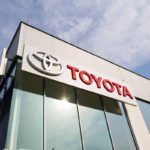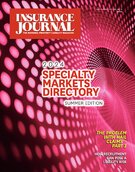The commercial auto insurance segment maintained its place as a weaker-performing U.S. property/casualty insurance product line in 2023. Despite successive periods of pricing and underwriting actions, commercial auto has generated a statutory combined ratio above 100 in 12 of the last 13 years, including a highly unprofitable 109 in 2023.
In contrast, the overall commercial lines insurance sector reported an unusually long period of success in recent years, with a 97 average combined ratio for the five years 2019 through 2023. This performance is largely due to an extended hardening market pricing cycle that is entering its seventh year, combined with renewed market underwriting discipline, and despite loss volatility from multiple sources.
Commercial auto results are anticipated to modestly improve in 2024, but several systemic and economic factors continue to influence claims trends and add to loss reserving uncertainty that will inhibit any return to underwriting profitability for the market in the near term.
History of Underwriting Losses
Commercial auto is the third largest product segment in the U.S. commercial insurance sector with $55 billion in net written premiums in 2023. Premium volume has grown at an annualized rate of over 9% for the last five years.
Prior to 2020, substantial corrective underwriting and pricing actions over many years failed to restore segment profitability as insurers grappled with risk factors tied to expanding transportation activity, shortages of trained drivers, and the emerging peril of distracted driving from more complex dashboards and growing dependence on digital devices.
Also, growth in loss costs over the long term were influenced by more sophisticated, complex technology and components within vehicles that boost physical damage costs, accidents occurring at higher speed that increase loss severity and vehicular deaths, and more frequent claims litigation that leads to higher ultimate settlement costs.
The sharp decline in driving activity and other economic disruption during the pandemic led to a brief respite in commercial auto underwriting losses with the segment, generating a 99 combined ratio in 2021. Reported commercial auto liability claims fell by 25% from accident year 2019 to 2020, and claims closure and payment patterns were greatly affected by the slowdown in judicial activity from court closures. Annual reported claims volume has gradually recovered, with total reported commercial auto liability claims in 2023 approximately 6% below 2019 levels.
However, the fundamental challenges in commercial auto never went away, actually expanding amid the economic recovery from the pandemic. The average statutory closed claim payment in commercial auto liability increased by 39% from calendar year 2019 to 2023 as loss severity spiked in the last three years relating to the recent rise in general inflation, as well as supply chain and labor market shortages.
Additionally, more frequent attorney involvement in transportation claims and greater potential for nuclear verdicts in several jurisdictions continue to drive commercial auto loss costs. An expanding presence by the litigation finance industry further adds to insurers’ litigation exposure.
Chronic Loss Reserve Deficiencies
In tandem with generating annual material underwriting losses, prior period loss reserves in commercial auto liability developed unfavorably for the last 12 consecutive years, averaging over 6% of calendar year earned premiums from 2019-2023, including 7.5% in 2023. Consistent reporting of annual loss reserve deficiencies in commercial auto reflects the inherent uncertainty in estimating loss costs. Besides the negative earnings impact from reserve development, regularly underestimating incurred losses in the current period adds to the likelihood of underpricing future renewal business.
On an accident year basis, the industry in aggregate has a similar poor track record in estimating commercial auto liability ultimate losses.
For accident years 2014-2019, the current reported loss and loss adjustment expense (LAE) ratio is 10 percentage points higher than original estimates on average. The large shift in claims frequency has contributed toward a brief respite in development as the 2020 accident year has developed modestly favorably since inception.
While the 2014-2019 years still may report adverse experience, of greater concern is that the 2021 and 2022 accident years each already have reported 2 percentage points of unfavorable development from the original estimates, despite ongoing underwriting and pricing actions. This continued adverse experience indicates that the commercial auto industry did not fully anticipate the effect of economic inflation and rising social inflation in the last two years.
As the bulk of segment loss reserves are held in the most recent underwriting periods, the reserve experience of the 2021-2023 accident years will influence commercial auto underwriting results going forward.
An accident year’s reserve development trend in the first few years, favorable or unfavorable, rarely reverses itself for liability lines. While these most recent accident years may develop unfavorably going forward, insurers’ approach to reporting incurred losses has changed somewhat in response to claims inflation that may dampen the magnitude of future adverse development.
First, the reported industry loss ratio in commercial liability in accident year 2023 of 80 is 4 to 5 percentage points higher than the original loss ratio reported for past highly deficient underwriting periods, suggesting a more prudent initial incurred loss estimate.
Second, statutory data shows that reserves per outstanding commercial auto liability claim of $61,000 are 37% higher than the year-end 2019 level. Also, accident year reserve ratios, including paid-to-incurred losses and incurred but not reported (IBNR) losses-to-incurred losses at 12 to 36 months for accident years 2021-2023, are at more conservative levels relative to prior highly deficient years.
Price Increases Alone Can’t Solve Problems
Over a decade of underwriting and pricing actions have failed to move segment results to a more profitable footing.
Commercial auto quarterly renewal premium rates have averaged over 8% in the last four years, according to the Council of Insurance Agent & Brokers (CIAB) Quarterly Commercial Market Pricing Survey, including a 7.3% increase for fourth-quarter 2023.
Material changes in segment performance will require more rate but also a tempering of loss severity patterns to stabilize segment performance. It is unclear whether market competitive forces will intensify or policyholder fatigue from years of price hikes will set in at some point to inhibit a return to underwriting profits.
Fundamental improvement in commercial auto risk selection and pricing adequacy are also warranted. Gathering better information in the policy application process, combined with harnessing advanced information technology from telematics to artificial intelligence, will provide the most likely path to longer-term fundamental change.
This article first appeared in Carrier Management, a sister publication to Insurance Journal.
Topics Profit Loss Auto Commercial Lines Business Insurance Liability
Was this article valuable?
Here are more articles you may enjoy.



 Class Action Accuses Toyota of Illegally Sharing Drivers’ Data With Progressive
Class Action Accuses Toyota of Illegally Sharing Drivers’ Data With Progressive  Florida Bill Advances, Would End Board of Engineers, Other Professional Agencies
Florida Bill Advances, Would End Board of Engineers, Other Professional Agencies  Don’t Forget Tariff Impacts on Workers’ Compensation: Berkley
Don’t Forget Tariff Impacts on Workers’ Compensation: Berkley  Gov. Hochul’s Proposed Regulatory Changes to Workers’ Comp Treatment
Gov. Hochul’s Proposed Regulatory Changes to Workers’ Comp Treatment 


